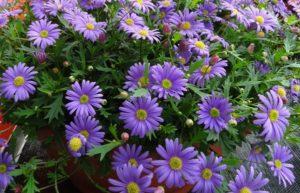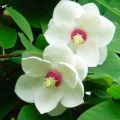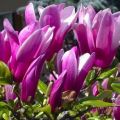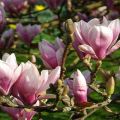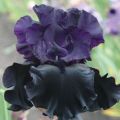15 best varieties and types of magnolias with descriptions and characteristics
Blooming magnolias always attract the eyes of passers-by, because they are literally covered with bright flowers of a large enough size, which makes them incredibly attractive. Magnoliaceae have a rather extensive genus, numbering more than a dozen species. Therefore, every gardener will be able to choose a plant that suits him.
Description
Magnolia is a tree or large shrub of the Magnoliaceae family with evergreen or falling, whole-edged leaves.
Magnolia flowers are single, bisexual, with a bright pleasant aroma. They can be axillary or terminal. The diameter of the flowers is from 6 to 35 cm. The petals are arranged in one row, tiled overlapping each other. Magnolia blooms in early spring, but there are species that bloom only by early summer.
The fruits of the plant are shaped like a cone, which consists of leaflets with seeds. After the fruit opens, the black seeds hang down on the seed strings.
Possible plant colors
Magnolia flowers range in color from white and pale pink to deep pink and purple. The range of shades between these colors seems endless. There are also blue-green flowers, but they stand out little between the foliage. Yellowish shades of magnolias are also rare.
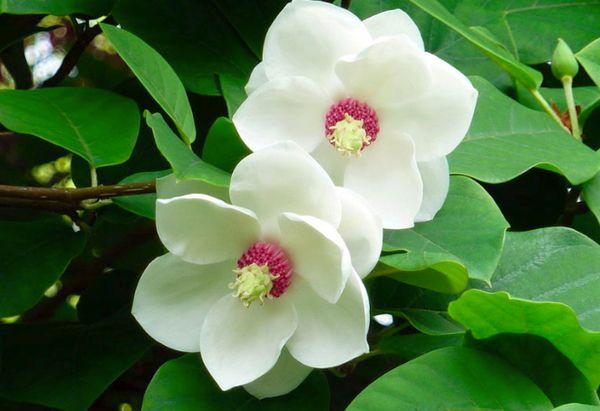
Popular varieties and varieties
There is a magnolia variety for every garden, size and plant. Although they may be very different from each other, all species are united by extraordinary beauty and attractiveness.
Interesting to know! Scientists believe that magnolia appeared during the reign of dinosaurs on earth.
Large-flowered
In nature, it grows in the territories of North America. It is an evergreen tree species that can withstand frosts down to -30 ° C. It has large white flowers up to 25 cm in diameter and equally large cone-shaped fruits with a bright color.
At first, the tree grows slowly, but over time it accelerates and can annually give an increase of 60 cm. Prefers rich sandy loam soil. Large-flowered magnolia tolerates city conditions well.
Star-shaped
The homeland of this variety is Japan. It is a small deciduous tree or shrub with a globular crown. The flowers reach 10 cm in diameter. They have elongated, ribbon-like white petals that resemble "stars".

This species begins to bloom earlier than others. Star magnolia blooms long before the leaves appear on the branches.
Cobus
Magnolia Kobus is native to North and Central Japan or South Korea. In nature, it grows along mountain rivers.A deciduous tree with a narrow, pyramidal, pointed crown at a young age that becomes wider and rounder with age.
The foliage of the plant is darker on top than below. The flowers are milky white, up to 10 cm in diameter. The plant begins to bloom at the 8-15th year of life. Blooms in early spring, before foliage begins to appear.
This species is hardy and one of the fastest growing among magnolias.
Siebold
This species is distinguished by its low growth, which ranges from 3.5 to 4 m. The flowers are highly decorative. On the white background of the flower, a crimson stamen stands out brightly. The buds on the plant begin to appear in late spring - early summer.
Siebolda loves well-drained, well-watered soil. Easily tolerates cold, but reacts poorly to late frosts. Does not like open sunny areas, gets burns from direct sunlight.
Grandiflora
Large, evergreen tree with dark, dense foliage sticking out in different directions. The leaves are up to 25 cm long and about 12 cm wide.Grandiflora flowers are located singly at the ends of the shoots, 25 cm in diameter.One flower has 6 to 12 petals, the width of which reaches 5 cm.White flowers in the middle are violet-purple with a yellow stamen ... They have a bright pleasant aroma.
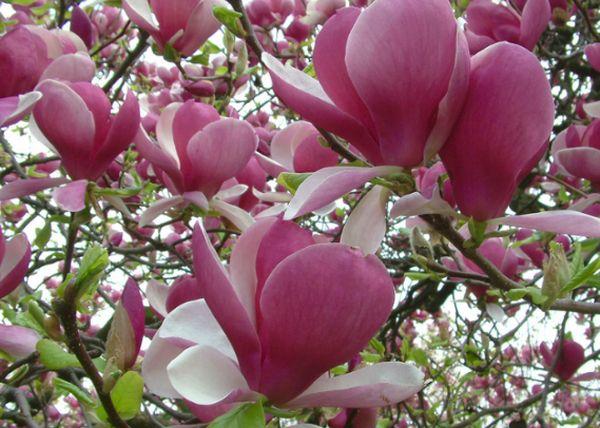
Flowering begins in May and lasts until October, and sometimes until November. "Cones" with red seeds are decorative.
Stellata
One of the earliest flowering varieties. The tree is deciduous, growing no higher than 3-4 m. Abundant flowering, large pure white flowers 8-10 cm in diameter. The petals are ribbon-like, long, up to 1 cm wide. They have a pleasant aroma. The flowering period begins in April or May.
Elliptical or reverse-elliptical foliage, alternating. The size of the leaves is 5-6 cm. The plant is slow-growing. Stellata's annual growth is 15 cm.
Betty
Deciduous shrub up to 4 m high, with a rounded crown. Flowering occurs before foliage appears from April to early July. The flowers are large, up to 20 cm in diameter, white-pink inside and purple-red outside. The petals are narrow, slightly curled.

The Betty variety prefers sunny or semi-shady areas, sheltered from the wind. With proper care, it tolerates cold well.
Virginia
Semi-evergreen, deciduous tree, reaching 20 m in height. The foliage is glossy, green above, grayish-blue or whitish below, silky-velvety. Flowering is not plentiful, but long lasting. The flowers are milky white in color with a slight pleasant aroma. Many connoisseurs consider her scent to be the best among magnolias.
Virginia magnolia prefers a swampy environment, which is unusual for magnolias. It can grow both in the sun and in the shade, but still develops better in light partial shade. The plant is hardy, can withstand frosts down to -25 ° C. It can withstand short-term night frosts down to -30 ° C.
Jenny
The maximum height of this variety is 3 m. The flowers are ruby-red, tulip-shaped, which gradually unfolds, forming a rounded shape. Flowering occurs in April-May and lasts about a month. Towards the end of summer, Jenny's magnolia blooms again with the same abundance of flowers as the first time.
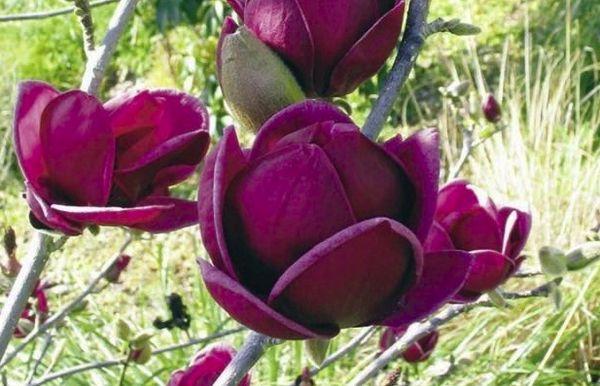
This variety grows better in sunny, sheltered areas. Well tolerates winter.
Threefold
Three-petalled or umbrella magnolia is distinguished by its large-leaved. Its leaves reach 60 cm in length, they have an obovate elongated shape, collected at the tips of the shoots, form "umbrellas".
The flowers are creamy white, up to 25 cm in diameter, with a pronounced unpleasant odor that attracts beetles, which pollinate the plant.The variety blooms from mid-May to early June, on average, this period is 20 days. Three-petalled magnolia is hardy, but still needs shelter for the winter.
Large-leaved
Large-leaved magnolia variety native to the southwestern regions of North America. It is a tree reaching 18 m in height. The crown is tent-shaped with heavy foliage from 80 cm in length with wavy edges. Biennial branches are reddish brown and then turn gray.
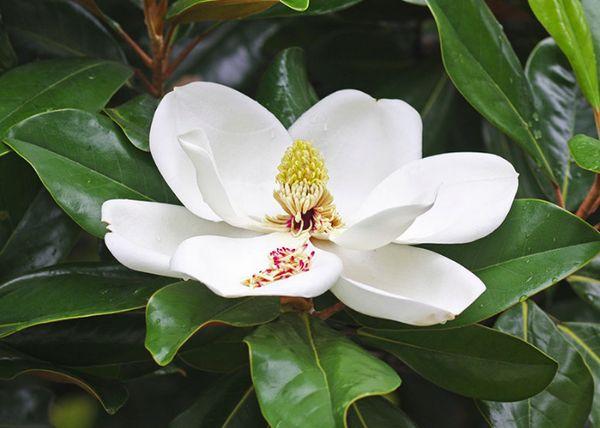
The flowers of this variety are also large, up to 30 cm in diameter. At first, they have a milky white color, and over time they change to an ivory color. The flowers have characteristic purple spots. The fruit is purple-pink, up to 8 cm in size.
Pointed
The young tree has a slender, wide-pyramidal, rounded crown. Plant height reaches 30 m, crown width up to 18 m. In old age, the trunk thickness is 120 cm in diameter. The flowers of this magnolia are small, only 5-7 cm. They have a bell-shaped shape, the color is yellowish-green with a bluish bloom.
This species is also called cucumber, and all because of its fruits, which, when unripe, have a green color and a shape similar to cucumbers. Their size is 5-7 cm.
Ash
Ash's magnolia is considered a rare species that grows in America in the state of Florida. It grows up to 8 m. It is a deciduous tree with large leaves. From above, they have a glossy surface of green or silvery-gray color. Blooms after foliage appears. The flowers are creamy and have a citrus scent. Their diameter is 20-30 cm. The variety begins to bloom in the 4-5th year.
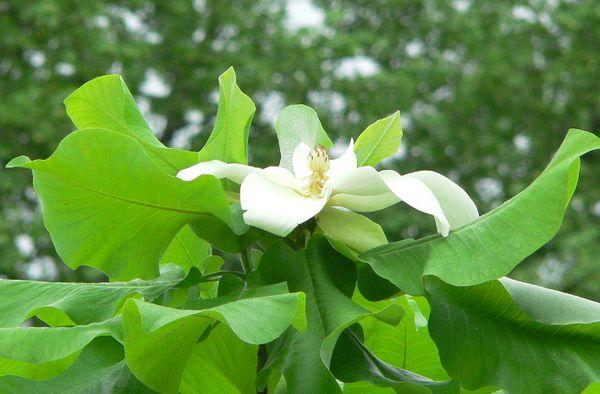
It develops best in sunny areas or in partial shade. Prefers drained acid-neutral soil. Does not tolerate stagnant water.
Variety selection criteria
The success of growing magnolias largely depends on how well the variety is selected. When choosing a species, you need to pay attention not only to the beauty of its flowers, but also to other criteria. Should be considered:
- the growth and width of the crown of the plant;
- frost resistance level;
- the quality of the soil where the plant will be planted;
- conditions for caring for a particular variety.
Magnolia in landscape design
In landscape design, beautifully flowering trees always occupy a dominant place, including magnolias. Low-growing bush or tree magnolias look great in various compositions, for example, the variety Rosea, Siebold or Star.
Magnolia looks advantageous against the background of city buildings, and in the countryside, in park areas and flower beds. They blend beautifully with other trees and shrubs, creating landscapes that are impossible to pass by without paying attention to them.
